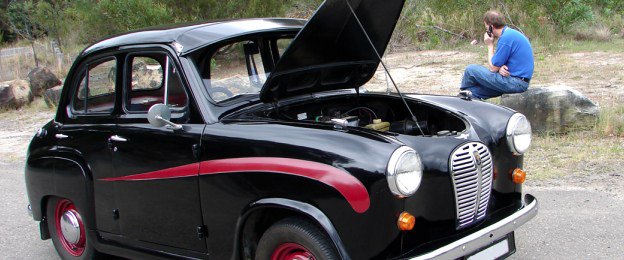
If your car ever breaks down and leaves you stranded on the side of the road, rescue may not come for several hours. If you're left sitting in extreme heat or cold, you may become uncomfortable very quickly, especially if you can't start the car. If you have young children or elderly passengers, the extreme temperatures can become deadly. This is why it's very important to have a roadside emergency kit stored in the trunk of your car. This kit should include everything you'll need if you end up stranded on the road. You can purchase some pre-made emergency kits, but these kits don't always come with everything you need. If you're going to put together your own roadside kit, here are some things you should include:
- A flashlight with extra batteries (a necessity if you break down at night)
- Jumper cables (at least eight foot; twelve foot cables are best)
- A first aid kit that should include aspirin, Band-Aids, antiseptic wipes, adhesive tape, and any over-the-counter medication you and your family need on a regular basis (such as antihistamines)
- A blanket
- A set of screwdrivers (flat head and Phillips head)
- A pair of scissors
- Pliers
- An adjustable wrench
- A tire pressure gauge
- A knife
- A roll of paper towels
- WD-40
- A sturdy pair of gloves
- Duct tape
- Ice scraper for the windshield
- Water (both for drinking and using in the car)
- Some old rags (can be a substitute for paper towels)
- A tow rope
- A brightly colored cloth you can wave to help attract help
- A small fire extinguisher
- Roadside flares
- Extra fluids for your car—oil, antifreeze, brake fluid, etc
- A funnel for refilling any of the various fluids
- Tire chains (especially if you live in an area with a lot of ice)
- A small folding shovel
- Nonperishable food items (such as granola bars)
- Pen and a notepad
- A car charger for your cell phone
- A large bag or box to hold your emergency supplies
Obviously, all of this stuff is going to take up a lot of space, but you may not need all of it all the time. If you live in a warm climate with mild winters, like here in the Tempe and Chandler area for example, you probably don't need tire chains. You may also need to add different items to your kit depending on your needs and location. For example, while a blanket is useful in cold weather, in warm weather, you might want to add a small battery-powered fan (with extra batteries, of course) or even some of the instant cold packs used for soft tissue injuries. You can also replace some items with a multipurpose tool (such as a Swiss army knife or Leatherman). If you're going to be traveling long distances, be sure you check your emergency kit before you leave. Make certain the batteries are still good and replace the nonperishable food if you need to. You may also want to check your emergency kit before the beginning of summer or winter, or about every three months. Also don't forget to restock it if you have to make use of any of the items in the kit.
Questions? Give us a call at: Book An Appointment
Book An Appointment